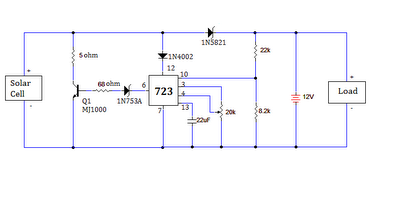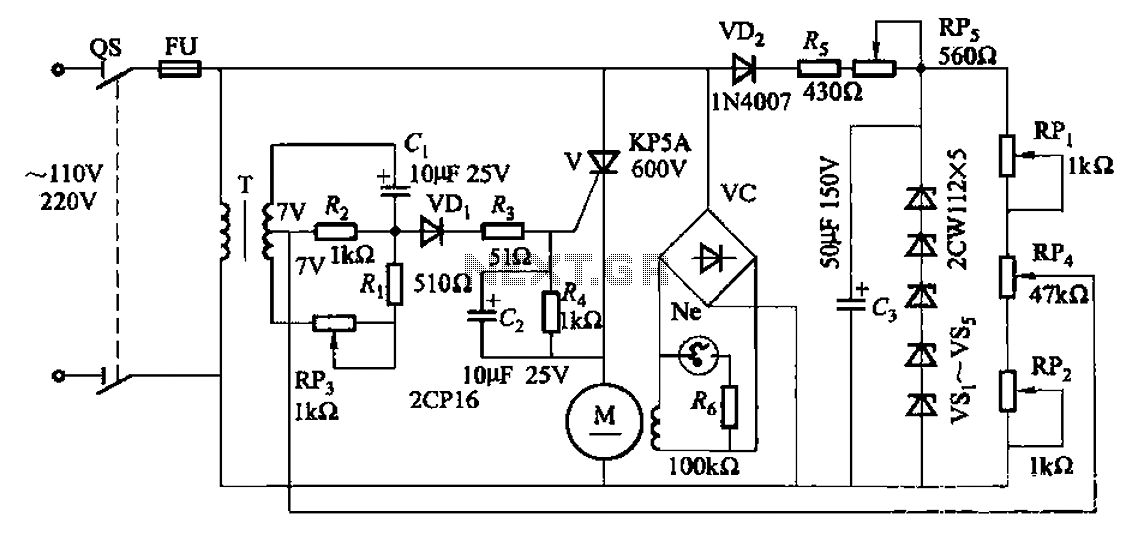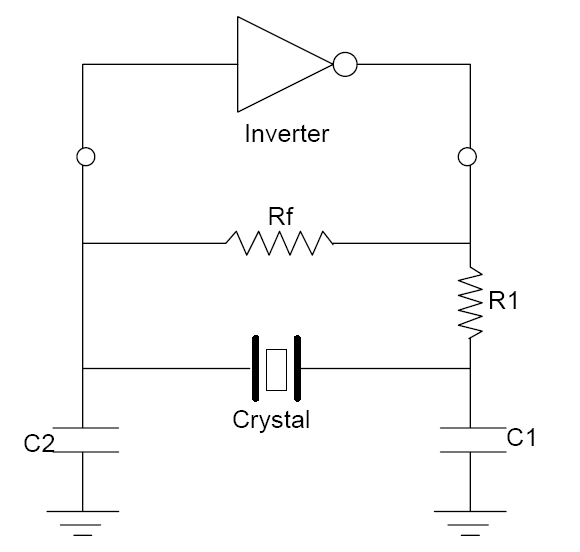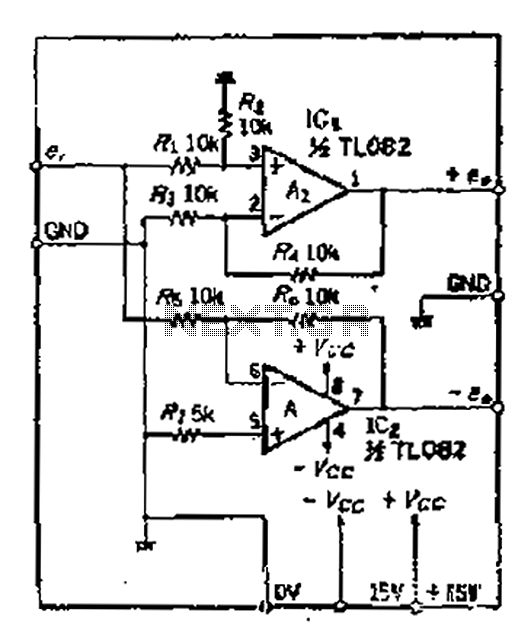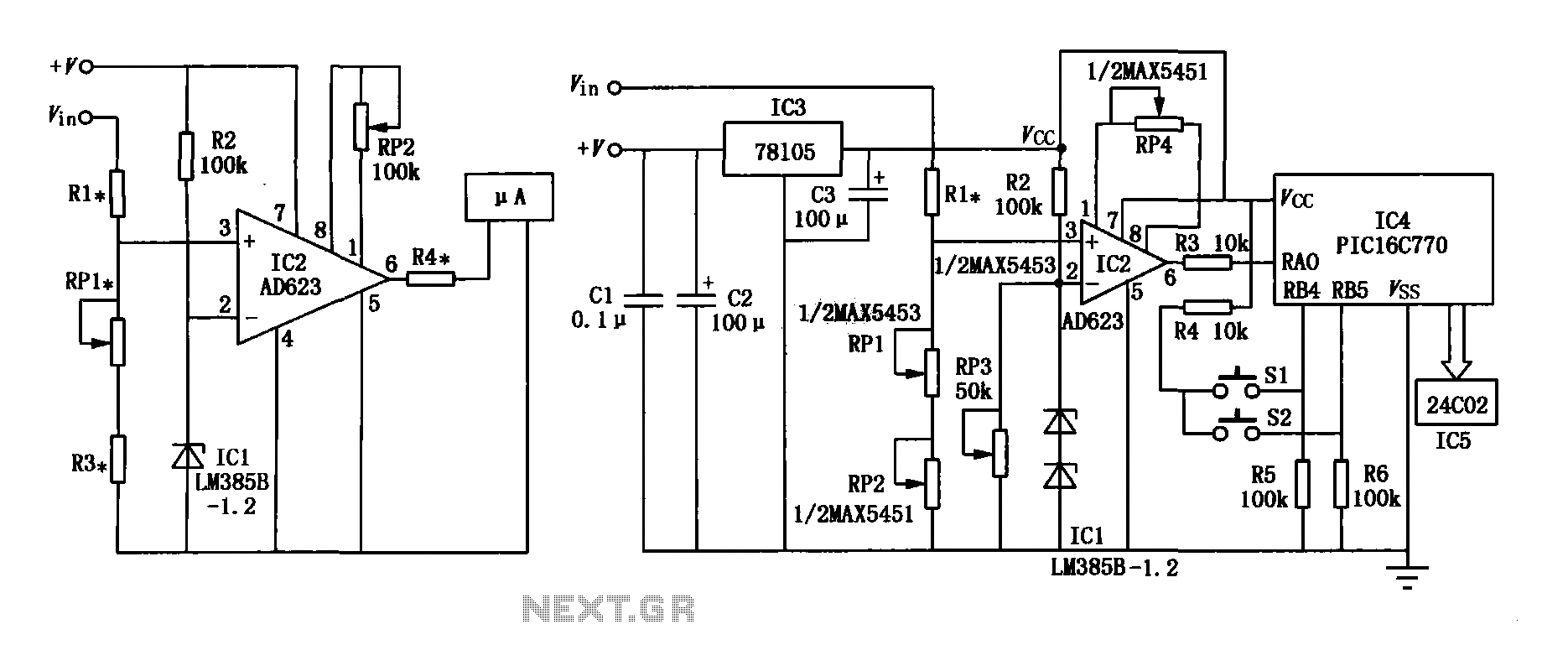
Single phase half-wave phase-shift trigger circuit resistance-capacitance

By adjusting the potentiometer RP, the output voltage of the phase shift bridge diagonal changes accordingly, which in turn alters the rectifier load power Rfz. Waveforms at respective points in FIG. 16-1 (b) illustrate this. Resistor R serves as a current limiting resistor to restrict the thyristor gate current. Diodes VDi and VDz are included to protect the control gate from excessive reverse voltage breakdown.
The circuit under discussion utilizes a phase shift bridge configuration, where the output voltage can be finely tuned via a potentiometer (RP). This adjustment directly influences the performance of the rectifier load (Rfz), thereby allowing for precise control over the power delivered to the load. The phase shift bridge operates by manipulating the phase relationship between the input and output signals, enabling effective voltage regulation.
In the circuit, the current limiting resistor (R) plays a crucial role in safeguarding the thyristor gate by restricting the amount of current flowing into it. This is essential for preventing damage to the thyristor, which can occur due to excessive gate current. The design ensures that the thyristor operates within its safe limits, enhancing the reliability and longevity of the circuit.
Additionally, the inclusion of diodes (VDi and VDz) serves as protective elements against reverse voltage spikes. These diodes are configured to prevent breakdown of the control gate by shunting any excessive reverse voltage away from the sensitive components. This protection is vital in circuits where inductive loads may generate back EMF or where transients can occur, ensuring stable operation and preventing circuit failure.
The waveforms depicted in FIG. 16-1 (b) further illustrate the operational characteristics of the circuit at various points, providing insight into the dynamic response of the system as the potentiometer is adjusted. This visual representation aids in understanding the relationship between the input adjustments and the resultant output behavior, making it easier to analyze and optimize the circuit performance.Adjusting potentiometer RP, the output voltage of the phase shift bridge diagonal oD phase change accordingly, thus obtained Rfz rectifier load power is also changed accordingl y. Waveforms at respective points in FIG. 16-1 (b) shown in the figure, R is the current limiting resistor to limit the thyristor gate current V; diode VDi, VDz to protect the control -gate from excessive reverse voltage breakdown.
The circuit under discussion utilizes a phase shift bridge configuration, where the output voltage can be finely tuned via a potentiometer (RP). This adjustment directly influences the performance of the rectifier load (Rfz), thereby allowing for precise control over the power delivered to the load. The phase shift bridge operates by manipulating the phase relationship between the input and output signals, enabling effective voltage regulation.
In the circuit, the current limiting resistor (R) plays a crucial role in safeguarding the thyristor gate by restricting the amount of current flowing into it. This is essential for preventing damage to the thyristor, which can occur due to excessive gate current. The design ensures that the thyristor operates within its safe limits, enhancing the reliability and longevity of the circuit.
Additionally, the inclusion of diodes (VDi and VDz) serves as protective elements against reverse voltage spikes. These diodes are configured to prevent breakdown of the control gate by shunting any excessive reverse voltage away from the sensitive components. This protection is vital in circuits where inductive loads may generate back EMF or where transients can occur, ensuring stable operation and preventing circuit failure.
The waveforms depicted in FIG. 16-1 (b) further illustrate the operational characteristics of the circuit at various points, providing insight into the dynamic response of the system as the potentiometer is adjusted. This visual representation aids in understanding the relationship between the input adjustments and the resultant output behavior, making it easier to analyze and optimize the circuit performance.Adjusting potentiometer RP, the output voltage of the phase shift bridge diagonal oD phase change accordingly, thus obtained Rfz rectifier load power is also changed accordingl y. Waveforms at respective points in FIG. 16-1 (b) shown in the figure, R is the current limiting resistor to limit the thyristor gate current V; diode VDi, VDz to protect the control -gate from excessive reverse voltage breakdown.
